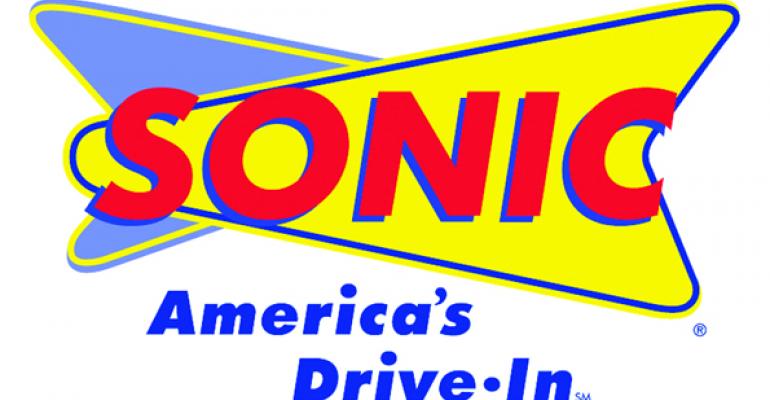Sonic Corp. executives expect revised media buying will help it maintain its profit margins, which more than doubled its net income in the second quarter.
Executives of the Oklahoma City-based drive-in operator who spoke with analysts Monday also indicated they are developing a loyalty program to help drive traffic for the brand.
On Monday Sonic reported an increase in net income to $3.6 million, or six cents per share, in the quarter ended Feb. 28, compared with $1.7 million in the same period last year. Revenue in the second quarter slipped to $111.1 million, from $115.1 million in the year-earlier quarter.
RELATED
• Sonic more than doubles profit in 2Q
• Sonic focuses on new menu items, smaller prototype
• More restaurant industry finance news
Sterne Agee analyst Lynne Collier maintained a neutral rating on Sonic’s shares on Tuesday. “While revenues were slightly shy of our expectations,” Collier wrote in a research note, “the upside stemmed from lower-than-expected other operating expenses as the company benefited from the re-franchising of lower volume units.”
Sonic refranchised 34 drive-ins during the quarter.
Advertising shifts have helped drive sales, said Clifford Hudson, Sonic’s chairman and chief executive. “As we've noted beginning in January 2013, approximately 70 percent of our media dollars will be invested in national cable, with the remaining portion in local television and other mediums,” Hudson said. “This is up from roughly a 50-50 split previously, and that is between local and national, and should have the impact of increasing the number of times our average customer or potential customer in every market will see our commercials.”
He said the exposure should eventually have a positive impact on new-store development.
In February 2012, Sonic re-introduced its “Two Guys” television commercials, which Hudson said helped drive traffic outside the typical lunch and dinner dayparts. About 50 percent of Sonic’s sales are outside those two periods, he said.
The reintroduction of the two recognizable characters was a key part of Sonic’s strategy, Hudson said, “enabling us to promote all dayparts, all of our dayparts in shorter time frames, or promote all of the dayparts within the same quarter, which is our objective.”
Hudson added that the “Two Guys” have become a brand-builder. “We're continually looking for ways to keep them fresh and relevant because they have worked so hard for us and are so closely associated with our brand,” he said.
In answering analysts' questions, Hudson said Sonic is also working on a potential loyalty program, a vehicle that remains fairly rare in the quick-service segment.
“We do think it has a place in our business, and we have many very regular customers, so it makes sense to reward them for being so but also help drive additional traffic with customers who might appreciate that as well,” Hudson said, adding that plans for a possible loyalty program were still evolving.
Sonic is also working on store profitability, said Stephen C. Vaughn, the company’s chief financial officer. He noted that the new, smaller building prototype improves return on investment.
“One of the reasons we expect stronger development over the longer term is the work we've done to improve new store return on investment through a new smaller building design,” Vaughn said, “which reduces non-land costs by 15 percent to 20 percent. We have opened several of these drive-ins to date, and we expect that this will become the primary layout for new stores in the future.”
As of Feb. 28, Sonic had 3,526 drive-in units in 43 states.
Contact Ron Ruggless at [email protected].
Follow him on Twitter: @RonRuggless





